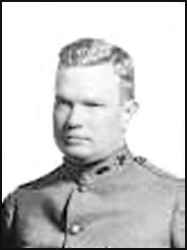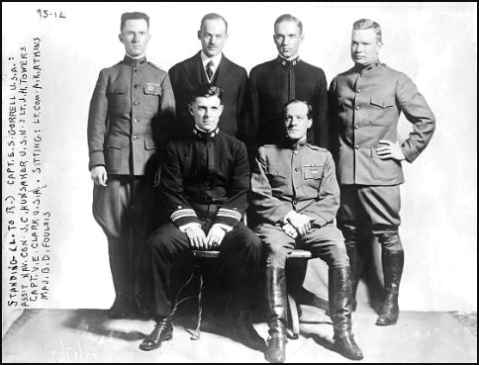
1886-1948 |
 |
 |
|
STANDING (L. TO R.) CAPT. E.S. GORRELL U.S.A.; ASS'T NAV. CON. J.C. HUNSAKER U.S.N.; LT. J.H. TOWERS CAPT. V.E. CLARK U.S.A. - SITTING: LT. COM. A.K. ATKINS MAJ. B.D. FOULOIS |
|
The Clark Y airfoil is named after Col. Virginius E. Clark, who designed many airfoils around the time of World War I. The Clark Y was designed in 1922. One of its distinguishing features is its flat lower surface from 30% chord to the trailing edge. This airfoil was widely used, but has been superseded by improved airfoils today. This is the airfoil used in the wing to be tested in this lab. Virginia Tech, Aerospace and Ocean Engineering You may read the original article by clicking on Experiment 7, AERO/HYDRODYNAMIC TESTING, by Dr. W. H. Mason |
|
You will find an entry on the (Virginius E) Clark-Duramold Div, Fairchild Aircraft Corp.on the AeroFiles site. You will find two photos of the Clark 46. You can visit that reference by clicking on: Virginius Clark and using the "Find" function on "Virginius" You can find a second entry by clicking on: Virginius Clark and using the "Find" function on "Virginius" Plan to spend some time on this wonderful site. |
|
Colonel Virginius Evans Clark, famous Signal Corps pioneer aeronautical engineer, consulting engineer of the Hughes Aircraft Company, died in Santa Monica hospital on Jan. 30, 1948. Colonel Clark was born at Uniontown, Pa., Feb. 27, 1886. After public schooling he graduated from the Naval Academy, 1907, and was with the battleship fleet's round-world voyage of 1908-1909, and then joined the Coast Artillery and served at Boston, San francisco and Honolulu, 1910-1912. The summer of 1913 he joined the Aviation Section, Signal Corps, and learned to fly at San Diego, making his FAI certificate 273 on November 19. After a temporary return to the CAC he was detailed in the Aviation Section, Oct. 5, 1913, rated Junior Military Aviator with rank of Captain. After the required three years he was rated Military Aviator. The fall of 1914 he took the new aeronautical engineering course at M. I. T. at his own expense, the Signal Corps then having no funds for such purpose. He was one of two officers assigned. After graduation he became aeronautical engineer of the Signal Corps and that fall condemned the JN2s at Brownsville. In 1916 he was stationed in Washington on test and inspection of planes and plants, made a member of the N.A.C.A. and in 1917 was a member of the Joint A. & N. Board on Rigid Airships. He was the first C.O. of McCook Field, 1917-1918. After becoming vice-president of the S.A.E. in 1922 he was chief engineer (1920-1923) of the Dayton-Wright Co., which won first place in the Navy shipboard amphibian competition, followed by various models in Army competitions. In 1923 he became vice-president and chief engineer of Consolidated, which also won first place in an Army competition with the PTI. During the early part of his engineering career he became famous for his series of Clark airfoils. Surviving is his wife Rose U. (Stoll) Clark, and two sisters. courtesy of Steve Remington - CollectAir |


|